SEARCH






|
|
|
|


by Editor Jane Lyons
Edited and published by Yvette Depaepe, the 9th of January 2026
“Raven” by Yuris Zaleskis
Blackbird singing in the dead of night
Take these broken wings and learn to fly
All your life
You were waiting for this moment to arise
~Lennon-McCartney~
Crows and ravens hold a place of mystery, superstition and great mythology in cultures around the world.
Crows and ravens belong to the genus Corvus. While they differ slightly in appearance (ravens are larger and have a different tail shape), both birds are intelligent, social and mysterious, and prone to loud vocalizations.
For centuries, artists have been compelled to depict these birds in drawings, carvings, sculptures, paintings and photographs, portraying them as rich, graphic motifs filled with folklore and symbolism, defined by the places they inhabit. These birds have achieved great distinction not only in the visual arts, but also in literature, song and film.
Their stark black plumage, iridescent sheen and complex nature have attracted artists exploring themes of light, shadow, shape, line and duality. In most cultures, the legend surrounding these birds is a symbol of change, intelligence and the mysteries of life and the afterlife.
“The Crow” by Holger Droste
“The Raven” by Mario Grobenski - psychodaddy
“Hermanos Coral” by Juanjo Del Alar
“My Best Friend Dust” by Carola Kayen-Mouthaan
“story about 2 lovers” by Piet Flour
“When I Miss You” by hardibudi
“Raven Dance” by Christophe Kiciak
“Story” by Ewa Cwikla
‘the visitor” by Holger Droste
SOME FACTS ABOUT CROWS AND RAVENS
Crows and ravens are among the smartest animals in the world. They are known for their problem-solving abilities, tool-making and use, and facial recognition.
Their intelligence is comparable to that of a young child or a great ape.
Both ravens and crows are highly social animals. They mate for life and live for an average of 20 years in the wild, and much longer in captivity.
A flock of crows is called a 'murder', while a flock of ravens is called an 'unkindness' or a 'conspiracy'.
Crows and ravens generally do not get along. Crows are usually the aggressors, and disputes are typically over food or territory.
Alfred Hitchcock used 3,200 trained birds in his film The Birds. He revealed that the crows and ravens were the most intelligent, while the seagulls were the most vicious.
“Wet” by Jane Lyons
“the kitchen is very good today” by Holger Droste
“The Sentinels” by Paulo Dias
“When the World Refuses Freedom for Me” by Charlaine Gerber
“The Raven” by Loulou Beavers
“memento mori” by Cristian Andreescu
“Trio" by Olga Rudchenko
“Jack-o\’Scarecrow” by Christophe Kiciak
Blackbirds feature in the mythologies of many different cultures. In some cultures, they are omens of death, while in others, they are messengers of the gods. They are generally considered to be tricksters, and their intelligence, ability to create tools, and capacity to recognize faces distinguish them from other animals and have given rise to a rich and fanciful body of folklore.
In ancient Greece, for example, the crow was a symbol of Apollo, the god of prophecy. Native American tribes viewed the crow/raven as a symbol of many things, including the creation of the world and the gift of sunlight to mankind. In all cultures, crows and ravens have different meanings and are associated with various superstitions.
For visual artists, the one thing that binds them together is their striking appearance: their black plumage, which provides a strong visual contrast against a wide range of environments. Their intelligence provides many opportunities to capture them in action in various scenarios, from international street photography and landscapes to seascapes and even the kitchen sink.
They can add a layer of mystery and transformation to most photographs. Life is more interesting when we let them in. They are a gift to the visual arts and to us photographers.
“It is My Collar” by Carola Kayen-Mouthaan
“The Raven’s Widow” by Peeters Jos
“Opportunities” by Lucinda Lu
“Palmen aus Plastik by Agnes
“Crows Morning” by Jose C. Labato
“The Crows” by Luc Vangindertael (laGrange)
“African Pied Crow Portrait” by Mathilde Guillemot
“The Scarecrow” by Baden Bowen
“Paris” by Mikko Lagerstedt
“crossflow” by Piet Flour
“Whisper” by Dismas Awang
“Crow’s Legs” by Jane Lyons
“Be like a Crow.
Collect shinny objects.
Hop happily down the street for no apparent reason and scream loudly when you see your friends”.
~anonymous~
 | Write |
 | Christine Hardcastle Great article and wonderful photo collection! Inspiring!! |
 | Miro Susta CREW I don't like crows, but I like the write up about them and I love the beautiful photos, you might be curious why I don't like the these black, maybe in larger group they are rather noisy, but because one late afternoon i parked my car under the trees near local outdoor market, next morning my car was covered by white.... Congratulations on excellent article and of centre great thanks as usually to our Yvette for publishing it. |
 | Jane Lyons CREW Hi Miro, I totally understand.! Thanks for checking in! |
 | Patrick Compagnucci PRO Great article and images, thanks for sharing! |
 | Jane Lyons CREW Hi Patrick, thank you! |
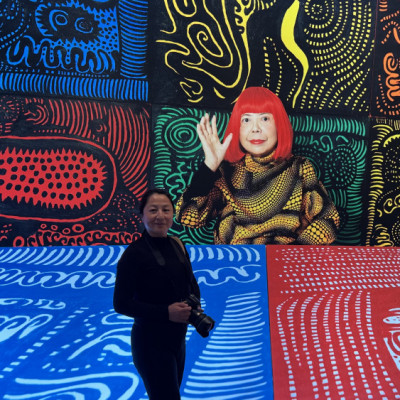 | Xiaoyang Sun PRO Very impressive work full of creativity! |
 | Jane Lyons CREW Thank you, Xiaoyang |
 | Xiaoyang Sun PRO Very impressive work full of creativity! |
 | Susan Beausang PRO Very informative article with great visualization to accompany the article. |
 | Izabella Végh PRO Un articolo molto interessante con le fotografie altrettanto buone. grazie le informazioni. |
 | DonnaHom APA PRO Excellent collection of the crow and raven along with facts about them. Some of the creative editing are very artistic. Thank you. |
 | Ralf Stelander FOUNDER Excellent selection of images! |
 | Jane Lyons CREW Thanks for checking in, Ralf |
 | Enzo Luigi D’Arcangeli PRO Mi permetto di esprimere un mio modestissimo parere, riguardo la galleria Foto-Grafica. Direi di cancellare Foto e lasciare Grafica. Certamente Bellissima Grafica. Per amor del cielo, lasciamo in pace l’arte Fotografica. |
 | Jane Lyons CREW Hola, Enzo. Gracias! |
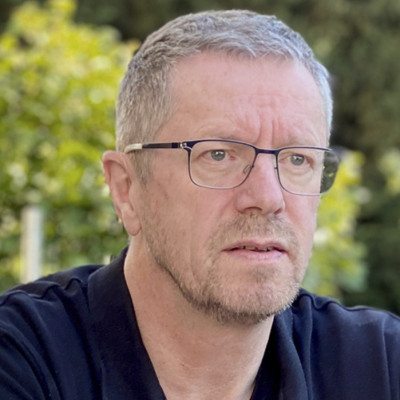 | Roland Weber PRO Cool... an amazing article.
Thanks for sharing the thoughts, facts and the nice photos which turn the article to a really good and interesting story. |
 | Jane Lyons CREW Thanks very much Roland! |
 | Mathilde Guillemot PRO Thanks a lot Jane for this beautiful article and for choosing one of my photo, it's an honor 😃 |
 | Jane Lyons CREW Hi Mathilde, your photo is beautiful! Thank you! |
 | Colin Dixon CREW Wonderful Article and amazing photography !!!!! |
 | Jane Lyons CREW Hi Colin, thank you! |
A tutorial led by editor Michel Romaggi in collaboration with author Yvette Depaepe.
Edited and published by Yvette Depaepe on 7 January.
While looking lately through my archives, I found a photo of a piece of artwork that was installed on the beach in Bredene during the fourth edition of the Beaufort art event in 2012.
‘Guardians of rust and ruin…’
Beaufort is a triennial art event showcasing contemporary sculptures and installations along the Belgian coast every three years. It was first established in 2003. The event includes various artists from Belgium and abroad, with many temporary and permanent works placed along the coast, creating a unique open-air museum experience.
I had wanted to do something with it for a long time, adding a personal touch.
When it was published and awarded, it became controversial because many viewers thought it was an AI-generated image, which is not allowed on 1x. I even had to write a forum post and add the original image to show viewers that it was not AI-generated.
However, some members recognized the artwork, and long-standing members knew for certain that I would never use AI.
POST PROCESSING
The image was processed in Adobe Photoshop.
This is the original file taken the 31st of May 2012.
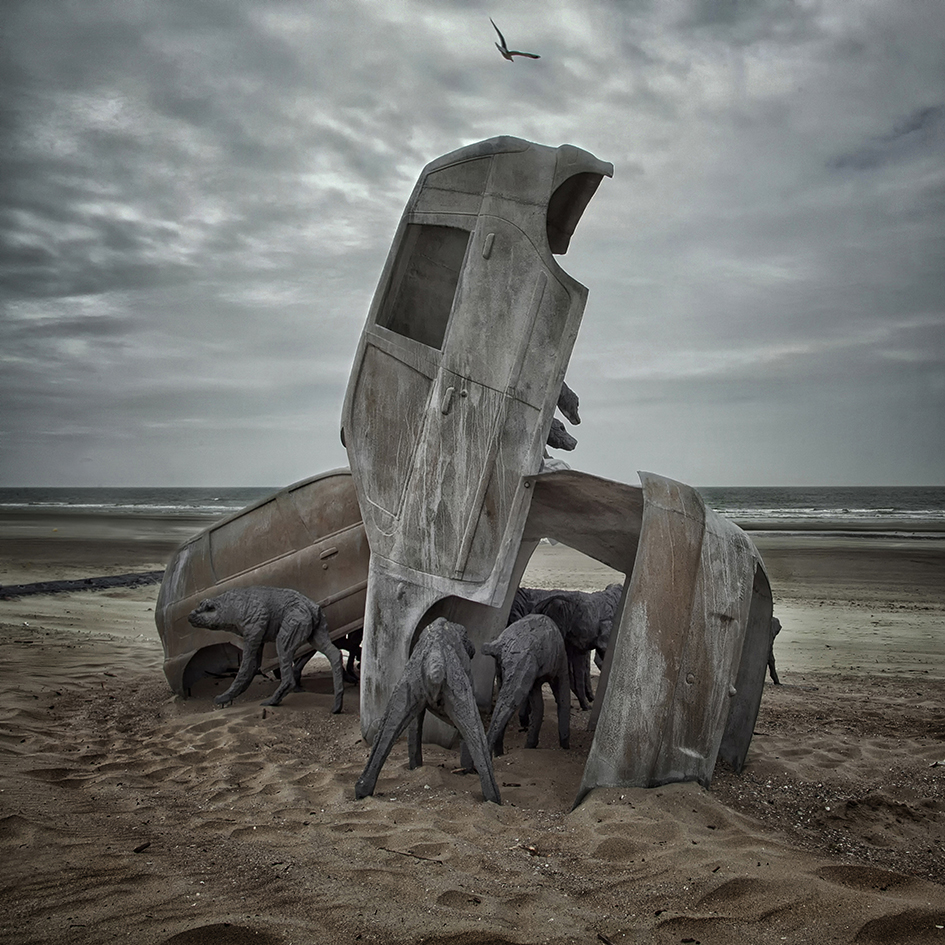 Settings: Canon EOS 5D MarkII . Canon 24-105mm . f/14 . 1/400sec . ISO400
Settings: Canon EOS 5D MarkII . Canon 24-105mm . f/14 . 1/400sec . ISO400
As you can see, the car wrecks were surrounded by metallic dog sculptures.
1. The first thing I did was clone the dogs out.
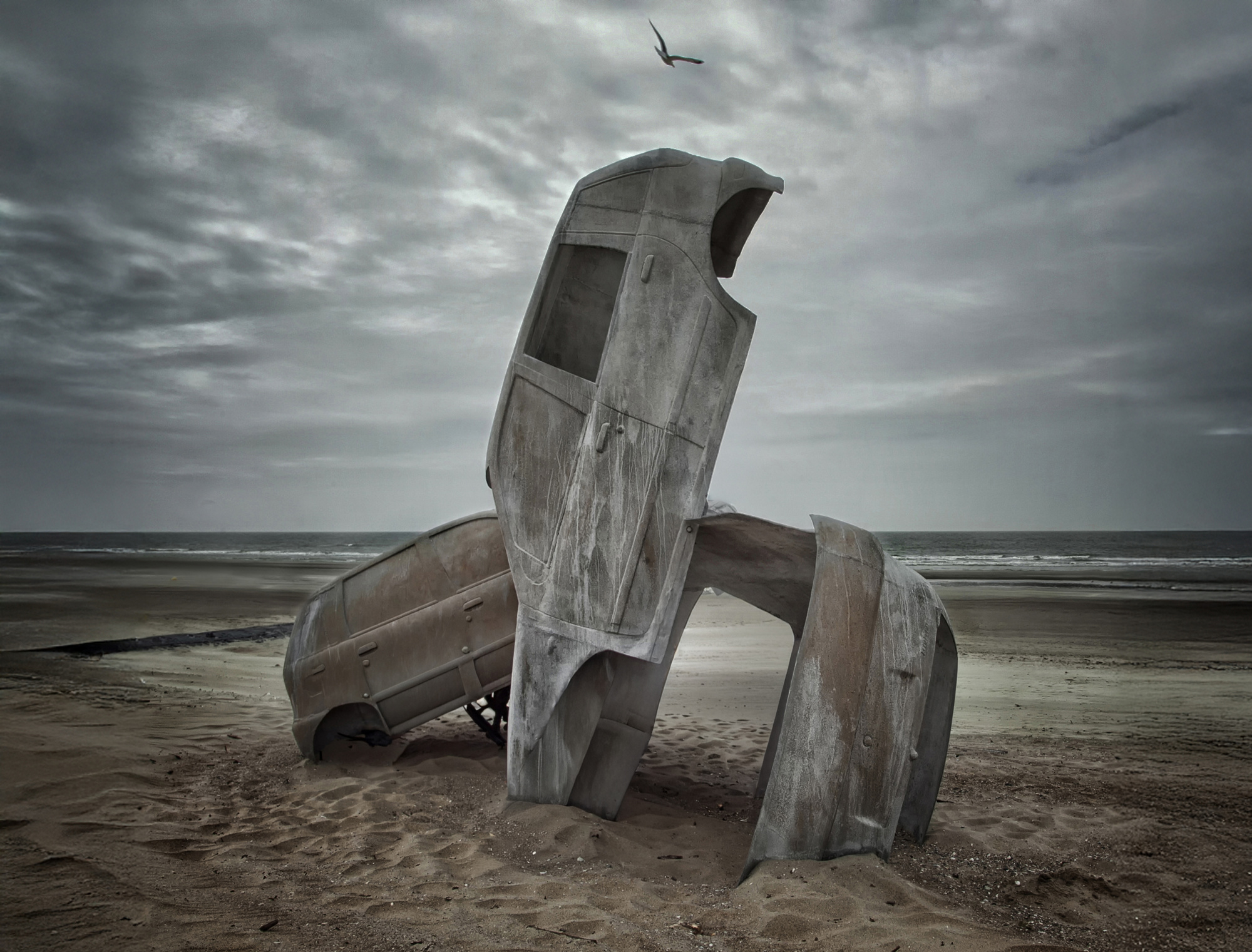
2. Then I replaced the sky with a dramatic one from my own files.
3. I made the colours more vivid by using hue/saturation tool in Photoshop.
4. And finally, I added two street dogs from my own files and adjusted once more the colours.
I was pretty satisfied with the result but still doubting - as always - when uploading it.
TIPS
As always, when downloading the photos I took, I immediately delete the really bad ones.
But here's some good advice: keep the good ones, even if they're not particularly special.
Often, when I go through my archives, I find an image to process after years of learning and developing my photographic skills.
Of course, photographic techniques and Photoshop features have also improved a lot.
Here is the perfect example of that: I processed this image after 14 years. 😉
ABOUT ME
I'm not one for talking about myself. Many of you know me as the editor-in-chief of 1x Magazine.
Editor Michel Romaggi provides us with interesting tutorials throughout the year.
When he asked me to write something about my 'Guardians of Rust and Ruin', I accepted immediately.
It's a pleasure to share my workflow with you.
Keep posting, keep up the good work, and let your creativity explode in 2026!
 |
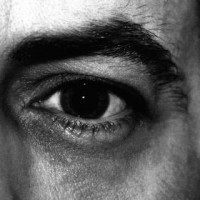 | Marco Virgone PRO Woow |
 | DonnaHom APA PRO Nice and creative work. I love the mood and color tone. Congratulations. |
 | Yvette Depaepe CREW Thank you, dear Donna ;-) |
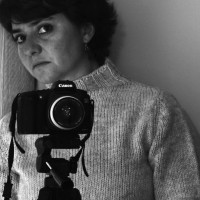 | Susi PRO Excellent and inspiring creative work! Thanks for sharing your work flow. |
 | Yvette Depaepe CREW Thanks, Susi ! |
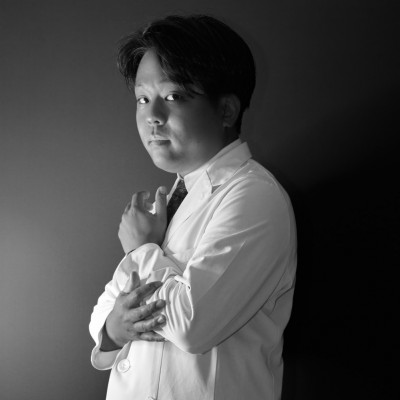 | Kaisyakuji Yushi PRO Dear Yvette and dear Michel, It was truly rewarding to follow the creative production process and the photographer's thought process. I found it very inspiring. |
 | Yvette Depaepe CREW Thanks for your appreciation, dear friend! |
 | Lucie Gagnon CREW I really like what you did with the original image Yvette! Love the transformation, the tones, the mood and the dog placement. I don’t throw out any photos unless they are out of focus or something like that. Thanks for sharing the process, dear Yvette! |
 | Yvette Depaepe CREW You're right, Lucie ... thanks for your fine reaction ♥ |
 | X-FlyingKN PRO Dear Yvette, fantastic work and a pleasure to read. Thank you for sharing your experience and perspective so generously; it offers real inspiration beyond technique. And many thanks to Michael too ! |
 | Yvette Depaepe CREW It gives so much satisfaction when one can inspire friends, Ken ... Thanks ... |
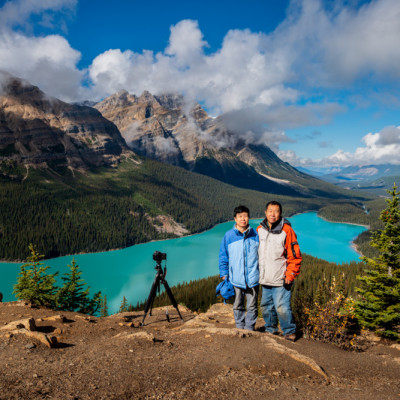 | Wanghan Li PRO Thanks for the writing and the wonderful works! Learning. |
 | Yvette Depaepe CREW My pleasure, Wanghan Li! |
 | Jacob (Jian) Xu CREW Dear Yvette, wonderful work and truly inspiring! Thank you for sharing your workflow and tips. While I may not be able to apply everything directly to my own photos, a seed has definitely been planted. And thank you to Michel as well for initiating this. |
 | Yvette Depaepe CREW I'm so glad to hear that a little seed has been planted, dear Jian! Thank you, my friend! |
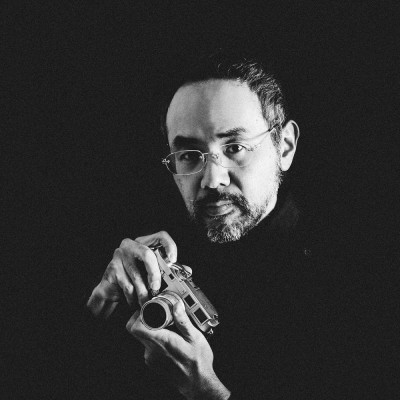 | Eiji Yamamoto PRO Dear Yvette and dear Michel, thank you so much for your very informative article! It's very inspiring! |
 | Yvette Depaepe CREW Thank you, dear Eiji! |
 | Optimum |
 | Yvette Depaepe CREW ;-) thanks Roberto ... |
 | Miro Susta CREW Very good work with excellent result, before capturing the subject I would chase the dogs away, but understand I am a man you are lady, why take the unnecessary risk. Congratulations on wonderful work and thank very much for your explanation. Good choice Michael. |
 | Yvette Depaepe CREW Thank you, Miro! |
by Editor Jacob (Jian) Xu
Edited and published by Yvette Depaepe, the 5th of January 2026
James Lu’s photography is rooted in patience, observation and a deep respect for everyday life. Although he works across genres, he is especially drawn to street photography. He focuses on mood and meaning, allowing genuine moments to unfold naturally. His images reflect a quiet sensitivity to light, gesture and human presence, shaped by an intuition honed through many years of patience and practice. For James, photography is more about connection than control, achieved through walking and observation.
‘Havana Street Before Dawn’
Dear James, first, I would like to thank you for taking the time to answer this questionnaire. Could you please start by introducing yourself briefly, telling us about your hobbies, and describing any other projects you are involved in?
My name is James Lu. I was born in Wuhan, China and I currently live in St. Louis, USA. I have worked as a ship design engineer and now serve as a financial investment adviser, but throughout these changes, photography has remained a constant companion in my life. I am a member of the Photographic Society of America and the St. Louis Camera Club. Outside of my professional work, I am an experienced photography teacher and curator, and I regularly organize exhibitions to support and connect with local photographers.
‘A Car in Trinidad’
How and when did you start your journey in photography?
Influenced by my family, I started studying Chinese calligraphy and seal carving from a young age. After receiving my first camera at secondary school, photography quickly became a lifelong passion, joining these early artistic pursuits. During my time at university, extensive shooting and time spent in the darkroom enabled me to develop a deeper engagement with photography as both a craft and an art form.
‘New York’
‘Trinidad Cuba’
‘Old Lady’
For many of us, photography is either a hobby or a way of life. How would you describe your relationship with photography?
I started out with photography as a hobby, but it has since become a constant presence in my life. Throughout my travels, career and personal development, photography has remained a constant companion, shaping the way I see the world and connect with others. Through teaching, curating and my own practice, photography remains both a personal passion and a meaningful way of engaging with life.
‘A Morning Chat’
What has been the most important experience so far that has influenced your journey in photography?
Teaching photography for over a decade has been the most influential experience of my photographic journey. It has required me to continuously learn and stay up to date with new equipment, techniques and post-processing methods, and has pushed me to grow alongside the medium itself. The most rewarding aspect is undoubtedly seeing my students succeed, whether by winning competition awards or having their work published and recognized on platforms such as 1X. Their successes have reinforced my belief that photography is about more than just personal expression; it's also about sharing knowledge and growing together.
‘Afternoon in Midtown Havana’
What is it about street photography that you find so appealing?
My photography covers a wide range of subjects, including travel, landscapes, wildlife and portraits. However, street photography holds a special place for me. I enjoy the experience of walking the streets with a camera, quietly observing everyday life as it unfolds around me. My non-intrusive approach enables me to capture genuine moments and subtle human interactions, which I find meaningful and endlessly fascinating.
‘Old Car and Friends’
What is more important to you when taking photos: capturing the mood or telling a story, or achieving technical perfection?
To me, the mood and story behind an image are more important than technical perfection. While technical quality provides a solid foundation, it is the emotion, atmosphere and narrative that give a photograph its lasting impact. I believe that an image can be technically imperfect yet still powerful if it captures an authentic moment or emotion. Technique should serve the story, not the other way around.
‘Street Corner, Trinidad’
What is your relationship with your subject matter beyond being an observer?
I feel a quiet personal connection to my subject matter, beyond simply observing it. I walk, pause and take my time, allowing life to unfold at its own pace. Rather than directing or interrupting, I try to be present and attentive, approaching people and scenes with respect and empathy. For me, photography is a means of understanding everyday moments and human emotions through careful observation.
‘Trinidad After Rain’
Do you carefully plan the locations where you intend to take photographs?
Planning is usually involved to some degree, especially when working in unfamiliar environments. In street photography, this often means planning routes based on time constraints, as well as paying attention to visually or emotionally interesting streets, light and backgrounds. These observations can then serve as waypoints for future visits, helping you to become more familiar with the area and allowing opportunities to develop more naturally.
‘Passing Through Light’
Describe your photographic vision as a whole. What, in your opinion, are the main features of a successful street photographer?
My photographic vision centers on observing and responding to the world with patience, respect and curiosity. I aim to capture images that appear natural and authentic, focusing on mood, atmosphere and a sense of place rather than visual spectacle alone. I am interested in photographs that encourage viewers to slow down and observe the world around them more closely. In my opinion, a successful street photographer combines strong visual awareness with empathy and restraint. They recognize meaningful moments, respect their subjects, and use technique in the service of storytelling rather than documentation.
‘Small Coffee Shop’
Could you tell us more about your workflow, from coming up with an idea to creating the final product?
My workflow begins with observation rather than a fixed idea. I spend time walking around an environment, taking in the scenes, light and human interactions, and using these to guide my photographs. While taking photos, I work intuitively, trying to remain unobtrusive while focusing on mood and authenticity.
Afterwards, I carefully review the images and let them rest before editing. Post-processing is kept subtle and is aimed at reinforcing the original atmosphere rather than altering it.
‘Malecon’
Where do you look for inspiration and what inspires you most?
I find inspiration in everyday life, particularly when I slow down and pay attention. Walking through the streets and observing the light, gestures and quiet moments often sparks ideas more effectively than any planned concept. Other art forms, such as calligraphy, painting and film, also inspire me, influencing how I think about balance, rhythm and visual structure.
However, what inspires me most is the human presence within a place and the subtle interactions between people and their surroundings. Teaching photography also inspires me, as learning alongside my students and witnessing their progress continually renews my curiosity.
‘Morning Blur Hour in Havana’
Many people believe that gear is not very important when you are passionate about photography. However, could you please tell us what equipment you use, such as your camera, lenses, lighting and tripod?
Although I believe that vision and passion are more important than equipment, I do use tools that suit different photographic needs. My main camera is the Canon EOS R5 Mark II, which I use with 15–35 mm, 24–70 mm and 70–200 mm lenses, as well as a 600 mm lens for wildlife photography. For street photography, however, I prefer smaller, more discreet cameras, such as the Fuji film X100 and the Ricoh GR series. These lightweight cameras enable me to work unobtrusively, allowing me to focus on observation and timing rather than equipment.
‘In a Bar, Havana’
‘Havana Girl in Blue’
Which photo is your favorite? Please tell us the story behind your choice.
One of my favorite photographs is of a taxi driver in Havana, as it captures a truly fleeting moment. I was walking through the narrow streets of Old Havana, searching for interesting subjects, when I noticed a red vintage car parked along the road. Suddenly, a taxi screeched to a stop beside me. The driver turned his head at the exact instant I faced toward him. I found his expression immediately compelling, and before he could even ask whether I needed a ride, I instinctively pressed the shutter. That brief, unplanned exchange is what makes the image special to me, it reflects the spontaneity and human connection I value in street photography.
‘Taxi Driver in Havana’
Which photographers or mentors have influenced you and your photography?
I have grown largely through spending time studying art history and the history of photography, slowly absorbing ideas from many modern and contemporary artists. Rather than following one particular artist, I have been influenced by this broad exposure. By looking closely at the work of different artists, comparing their approaches and reflecting on their perspectives, I continue to develop and evolve as an artist.
‘Boy and Dog’
‘On the Way to School’
Now that we're almost at the end of this interview, could you please tell us about any photographic projects you'd like to be involved in?
I plan to continue experimenting with different photographic approaches, placing a greater emphasis on street and documentary photography. I am currently working on several ongoing projects, including 'Route 66: The Mother Road of America' and 'Small Towns Along the Mississippi River'.
‘Carried by the Light’
‘Under the Arch’
Is there anything else you would like to add, and what are your thoughts on using 1X as a home base for your work?
For me, photography is a lifelong journey of observation, curiosity and personal development. I value 1X not only for their high standards, but also for the sense of community they foster. I see 1X as a meaningful home base where photographers from around the world can come together to share work, reflect on ideas, and learn from each other. I also strongly encourage my students to submit their work, as this process helps them to develop their vision and deepen their understanding of photography. Rather than waiting for the perfect moment to pass you by, it is by actively seeking out these moments and putting yourself out there that you will ultimately get the best shots.
 |
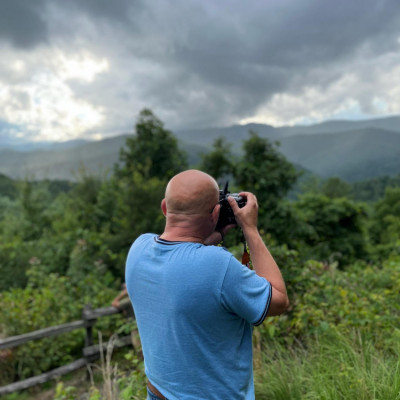 | Marek Lapa PRO Thank You James Very inspiring interview |
 | Wanghan Li PRO Impressive interview with the wonderful works! Congratulations! |
 | Yaping Zhang PRO 祝贺您,詹姆斯!赏心悦目,精美绝伦的大片! |
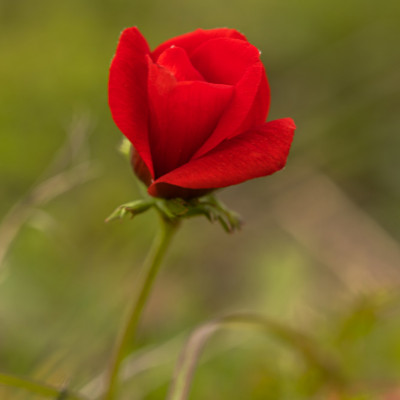 | Gila Koller PRO Wonderful photos James, my best compliments, and very interesting interview. |
 | Jamey Fenske PRO Beautiful photos and wonderful words. Very inspiring. |
 | Leah Xu PRO Excellent photos and an impressive interview. Congratulations! |
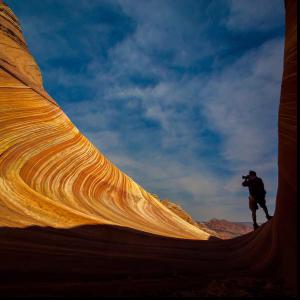 | James Lu PRO Thank you Leah! |
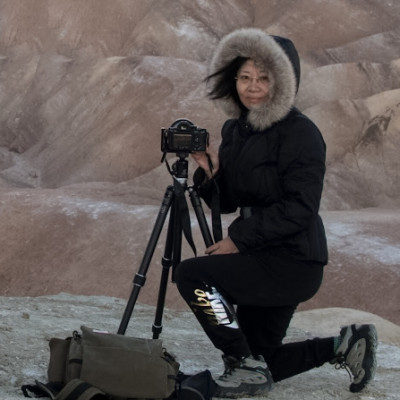 | Linda Lu PRO Congratulations, James! Each image feels alive, full of rhythm and quiet beauty. Captured not just the moment, but the soul of everyday life. Thanks to Jacob and Yvette for the interview. |
 | James Lu PRO Thank you Linda! |
 | Jacob (Jian) Xu CREW Congratulations, James! It’s a real pleasure to see your wonderful work and vision shared in the 1X community. |
 | James Lu PRO Thank you very much! I truly appreciate your support. It means a lot to have my work and vision shared within the 1X community. |
 | Miro Susta CREW Dear James you are master photographer, your street photos are wonderful, high quality class, allow me to congratulate you, and Dear Jacob and Yvette great thanks for arranging and publishing it |
 | Jacob (Jian) Xu CREW Thank you very much, Miro! Such a pleasure to see James beautiful work recognized here. |
 | James Lu PRO Thank you very much for your kind and generous words, Miro! My sincere thanks as well to Jacob and Yvette for arranging and publishing the interview. |
 | Eiji Yamamoto PRO Thank you so much for this wonderful, interesting and inspiring interview with great photos! |
 | James Lu PRO Thank you Eiji! |
 | Immagini magnifiche e bellissimo articolo. Le foto sono per me molto interessanti, rispettose del contesto e molto rappresentative della realtà quotidiana. Complimenti |
 | James Lu PRO Thank you! |
by Yvette Depaepe
published the 31st of December 2025
Wishes for 2026 from our founders, Ralf Stelander and Jacob Jovelou, and all crew members.
As the final pages of the calendar turn and a new year approaches, the art world stands once again at the edge of possibility. The transition into 2026 invites us to look forward—not with haste, but with curiosity, courage, and a renewed sense of purpose. At the 1x community, we see this moment as a fresh canvas: blank, open, and alive with potential.
The past year has been a testament to resilience and reinvention. Artists across the world have continued to explore, challenge, refine, and redefine their creative identities. They have found beauty in stillness, strength in vulnerability, and meaning in both the ordinary and the extraordinary.
Every new year brings a certain electricity, a spark that whispers:
What will you create?
What will you discover?
What will you dare to express?
In 2026, may that spark grow into a guiding flame.
Creativity is not a straight line—it is a river. And 2026 offers countless new tributaries waiting to be explored.
Art does not live in isolation. It grows richer when shared, discussed, admired, and even constructively challenged. Our community has always been one of dialogue and diversity, united by a shared passion for visual storytelling.
In the new year, we hope you will continue to :
Every image uploaded, every critique given, every encouraging word exchanged strengthens the creative ecosystem we collectively nurture. From the entire 1x Art Gallery team, thank you for being part of this extraordinary community. Your art enriches our platform, and your passion inspires everything we do.
Here’s to a luminous, adventurous, and creatively abundant 2026.
May your year be filled with fresh perspectives, meaningful work, and the courage to chase the images that live in your imagination.
Happy New Year—and may 2026 be your most inspired year yet.
 |
 | garyholman PRO Happy New Year! to All!! |
 | Wanghan Li PRO Happy New Year! Thanks for all! |
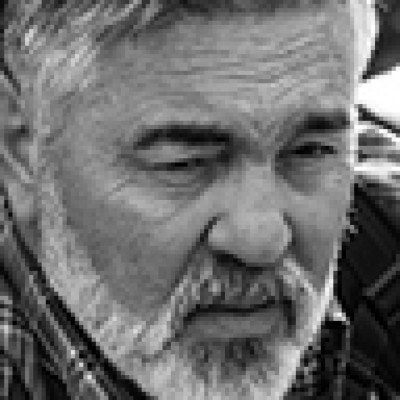 | Bernardo Dadic PRO
Merry Christmas and Happy New Year! |
 | Linda Lu PRO Thanks for the beautiful wishes! Happy New Year to 1x.! |
 | Marek Lapa PRO Happy New Year 💕 |
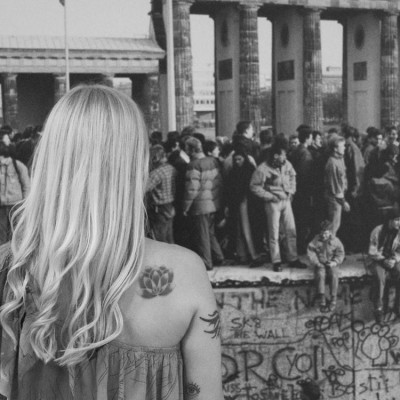 | Gabriela Pantu PRO Happy New Year!❤️ |
 | Susi PRO Many thanks to Yvette and the entire 1x team. Happy New Year! |
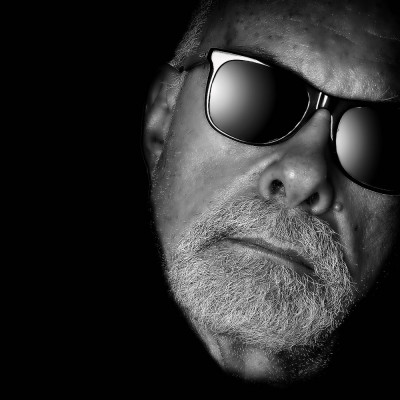 | Raffaele Corte PRO I completely agree with Hans-Wolfgang's doubts about the new path taken by 1x, but also with wishing you all the best for 2026! Thank you, dear Yvette! |
 | Yvette Depaepe CREW Thanks, Raffaele ... |
 | Roland Weber PRO Thank you very much for the wishes and the fabulous inspiration for the new year, Yvette.
A Happy New Year to you, to the 1x team and to all others around.
Happy New Year 2026! |
 | Yvette Depaepe CREW Thank you, Roland ;-) |
 | Thank you so much, Yvette and the 1x team. Happy New Year 2026! |
 | Yvette Depaepe CREW Thanks, dear friend! |
 | Thanks a lot Yvette ! Happy New Year to you and all of 1X members !!! |
 | Yvette Depaepe CREW Thank you, dear Gian ... Another creative year is waiting for us! |
 | Heike Willers PRO Happy New Year to all of you ! A wonderful and creative New Year 2026 to all of us! |
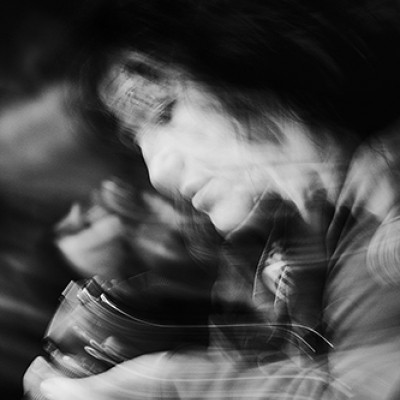 | Elena Raceala CREW Wonderful selection, Yvette! Congratulations to all the editors, and a Happy New Year 2026 to all 1x members!! |
 | Yvette Depaepe CREW Thank you, Elena ... Let's go for a terrific photographic 2026 ;-) |
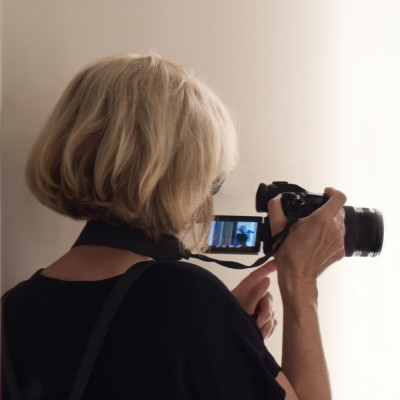 | Karin Kilb PRO Thank you Yvette. Happy new year for you and all members. |
 | Yvette Depaepe CREW ♥♥♥ |
 | Caroline Bomers PRO Thank you for all beautiful wishes. A happy, wonderful and creative 2026 to all of you! |
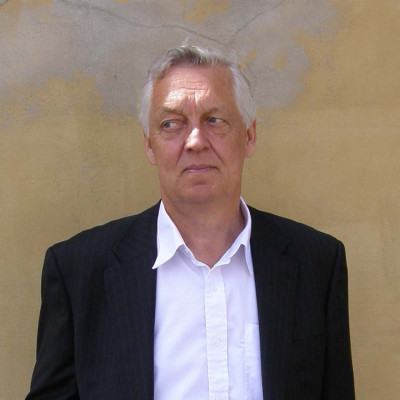 | Erik Engström PRO Happy New Year to all of you from all my heart |
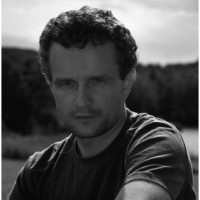 | Tom Pavlasek PRO Happy New Year 2026 to the entire 1x family! Thank you for the inspiration, creativity and passion shared here every day. Wishing everyone health, happiness and many unforgettable photographs in the coming year! |
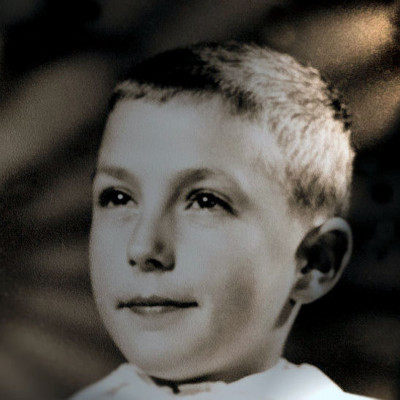 | Thierry Dufour PRO Happy New Year 2026 to all the 1X crew and members. Wonderful images to come during this new year on this splendid site !!! |
 | Elizabeth Allen CREW Thank you for all the wonderful wishes and Yvette for all her hard work. Wishing everyone good health, happiness, creativity and inspiration in 2026. |
 | Yvette Depaepe CREW Thanks dear Elizabeth. I wish you and your family all the best in 2026 and lots of photographic pleasure ;-) |
 | Hemanta Swain PRO May your shutter release with purpose, your focus stay true, and your light paint every moment in brilliance. As the new year unfolds, may you capture its every possibility, framing a journey of timeless memories. Happy New Year to those who see the world through the lens of wonder. |
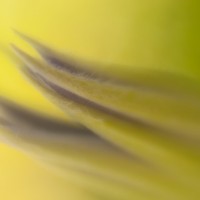 | Kathryn King PRO All beautiful and amazing photographs! Thanks for a wonderful magazine and best wishes to 1x team. |
 | Miro Susta CREW Very well composed message. Dear Yvette many thanks for your very hard and excellent work for 1x in 2025. I wish you and entire 1x community creative, happy, prosperous and healthy 2026. |
 | Yvette Depaepe CREW Thank you so much, dear Miro! |
 | The very best wishes to the 1x team and
all members. Together we click 📷 |
 | DonnaHom APA PRO Wow! What a nice collection! My best compliments. Congratulations to all selected image authors. Thank you for all editors. Wishing you the very happy 2026. |
 | Yvette Depaepe CREW May many of your wishes come true in 2026, dear Donna! |
 | Eiji Yamamoto PRO Happy New Year to all the 1X crew and members! May 2026 be a great year for everyone! Dear Yvette, thank you so much for this wonderful article! |
 | Yvette Depaepe CREW Thank you, dear Eiji ... I wish you and your family all the best in 2026 |
 | Yaping Zhang PRO 祝所有会员以及所有访问 1x.com 的人新年快乐。衷心感谢Yvette全年辛勤付出!为我们带来无限精彩纷呈的照片。也祝所有的管理老师领导们新年快乐。
|
 | Benny Pettersson PRO Happy New Year to all members and everyone else who visits 1x.com. Looking forward to all the fantastic pictures. |
 | Jacob (Jian) Xu CREW Happy new year everyone! Big thanks to Yvette! Because of your hard work and dedication, the magazine delivered such wonderful content for us! |
 | Yvette Depaepe CREW Thanks for such a great compliment, Jian! |
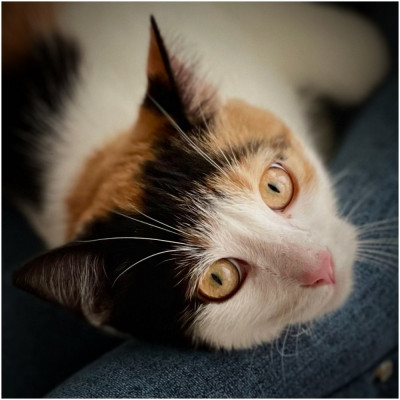 | Molly Fu APA PRO Best wishes to the 1x.com best team, Happy New Year everyone! |
 | Rana Jabeen PRO Best wishes for a wonderful year ahead to the Team and the entire 1x family here who share their art and talent to keep us motivated . Thank you Yvette for the lovely collection of photos and the superb article |
 | Yvette Depaepe CREW Thanks, dear Rana ... |
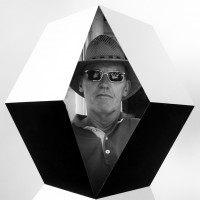 | Happy New Year to the complete Team of 1x.com and I wish that the founders reconsider whether the path they chose a few weeks ago is the right one. Many thanks to you dear Yvette for your continous support and work in 1x.com |
 | Yvette Depaepe CREW Thank you, Hans-Wolfgang ... ;-) |
 | Colin Dixon CREW Happy New year to everyone on 1X and huge thank you to Yvette for her hard work throughout the year giving us the Magazine and its content. |
 | Yvette Depaepe CREW Thank you, dear Colin ... And heartfelt wishes for you and your wife in beautiful Cotswolds that I hope to discover in 2026. ♥♥♥ |
by Yvette Depaepe
Published the 29th of December 2025
'Energy'
To represent energy in photographs, you can use techniques that create a sense of movement and dynamism, as well as emotional resonance. This can be achieved through various methods, such as motion blur, colour palettes and capturing candid moments that reveal a subject's internal state. The submissions were very diverse, including sports, dance, and storm photography, all of which showed lots of energy.
The winners with the most votes are:
1st place : Peter Ebel
2nd place: Antonyus Bunjamin (Abe)
3rd place : DDiArte
Congratulations to the winners and honourable mentions.
Thanks to all the participants in the contest 'Energy'
The currently running theme is 'Decay'
Decay may not be the first thing that comes to mind when you think about photography. It offers a unique and intriguing opportunity to explore the passage of time, transformation, and profound beauty in the most unlikely places. Abandoned buildings, rusted cars and so many more. Each offers its unique story and aesthetic.
This contest will end on Sunday the 11th of January 2026 at midnight.
The sooner you upload your submission the more chance you have to gather the most votes.
If you haven't uploaded your photo yet, click here.
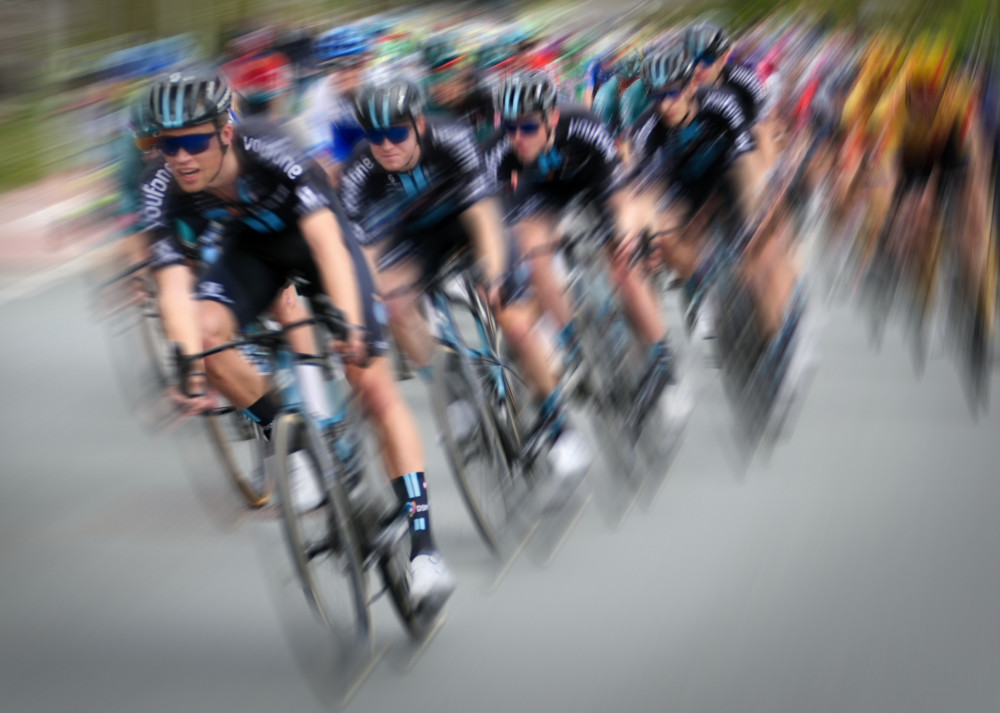 by Karin Kilb
by Karin Kilb |
 | Karin Kilb PRO Viele tolle Fotos wurden hier gezeigt.
Herzlichen Glückwunsch Peter zum ersten Platz.
Und danke an alle die mitgemacht und gewählt haben. |
 | superb series!...sublime! |
 | What a great series. Congratz to all ! And big thx to Yvette for everything she does on this amazing platform ! |
 | Miro Susta CREW Peter congratulations on 1 price award, and also my congratulations to all winners on excellent photo work, and also great thanks to our Yvette for her excellent work. |
 | Ruth Franke PRO Amazing images, thank you for showing, and thank you so much Yvette for your wonderful work throughout the year! |
 | Tomo PRO Amazing power and intensity. It's bursting with the force of life. |
 | DonnaHom APA PRO Congratulations to all winners. Thank you for organizers and judges. These are very well done images. |
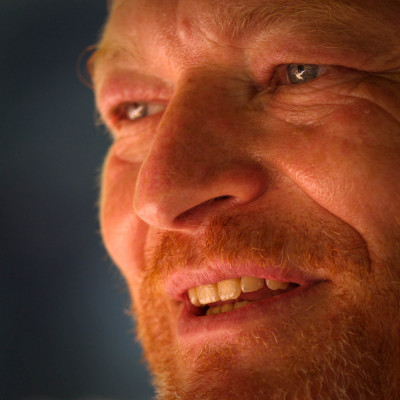 | Peter Ebel PRO Thanks to all participating and voting! I never expected this shot to be ranked as high as it did. It's a honor to the protagonist who is one of those with high engagement to make river surfing to happen in Hannover. |
 | Congratulations to all.
But nr 8 is AI generated. He did it again .... |
 | Peter Ebel PRO One can see this in the very first second, no lightning in nature behaves like this. |